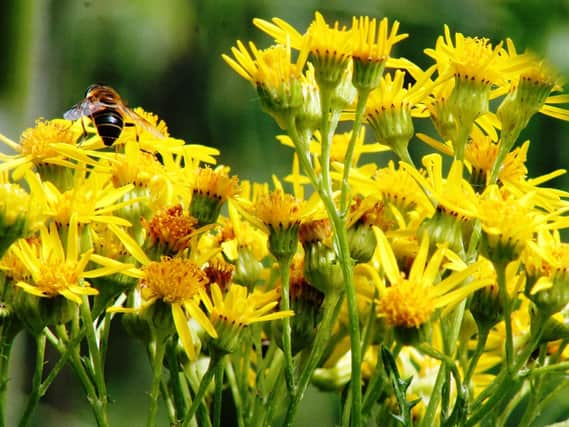'Playground thuggery' as nettles and brambles crowd out flowers on roadsides


The "nitrogen guzzlers", which also include cow parsley and creeping buttercup, thrive in nitrogen-rich soils caused in part by pollution from road traffic which settles on road verges, wildlife charity Plantlife said.
Advertisement
Hide AdAdvertisement
Hide AdThey are forcing out other wildlife-friendly and threatened species that prefer less rich soil, with the array of wildflowers on road verges shrinking by almost a fifth, analysis of trends since 1990 show.
Species such as red clover and lady's bedstraw, which support high numbers of insects, have seen the most rapid declines.
And rare wildflowers such as fen ragwort and wood calamint are clinging on in just a handful of verges, their last remaining habitat.
Advertisement
Hide AdAdvertisement
Hide AdThe pollution from traffic, which sees 90% of nitrogen of car emissions deposited within 15 metres of the road edge, combines with poor management of road verges to create a "perfect storm" for wildflowers.
Plantlife is calling on councils to manage verges better for wildflowers and the wildlife they support, while keeping them safe for motorists.
Changes could include cutting less and later in the year so flowers can set seed, allowing semi-parasitic plant yellow rattle to act as a natural lawnmower and not leaving cuttings on the verge where they increase the nutrient richness.
If all the road verges in the UK were managed for nature there could be almost 420 billion more flowers - 6,300 per person - the charity estimates.
Advertisement
Hide AdAdvertisement
Hide AdThe "dirty dozen" plants increasing in both the frequency they are found on verges and their abundance are stinging nettle, bramble, rough meadow-grass, ash, ivy, hawthorn, cow parsley, Yorkshire fog, hazel, blackthorn, sycamore and creeping buttercup.
Victims of the changing verge include tufted vetch, bugle, tormentil, white campion and greater knapweed, Plantlife said.
While nettles and the other species which thrive on the "junk food" of nitrogen are important for certain creatures, road verges are losing the mixture of species that support a range of wildlife, Plantlife's Dr Trevor Dines warned.
"It's playground thuggery. It's these bigger things which produce big leaves and lots of vegetation and they literally shoulder these small plants aside and out-compete with them," he said.
Advertisement
Hide AdAdvertisement
Hide AdRoad verges are home to more than 700 species of wildflower, and protecting the rich diversity of the country's roadsides is important in the face of the loss of wildflower meadows across the countryside, Plantlife warns.
Dr Dines said: "They're increasingly important when we remember that 97% of wildflower meadows have gone, that's 7.5 million acres gone from the countryside.
"You're driving past field after field without any flowers. The only places flowers are in much of our countryside are road verges.
"They've been eradicated from one side of the hedge in farmers' fields and we're now doing our best to eradicate them from the other side of the hedge," he warned.
Wildflower-rich meadows can also be good for people, many of whom get their only daily contact with nature from the plants outside their car window, he added.